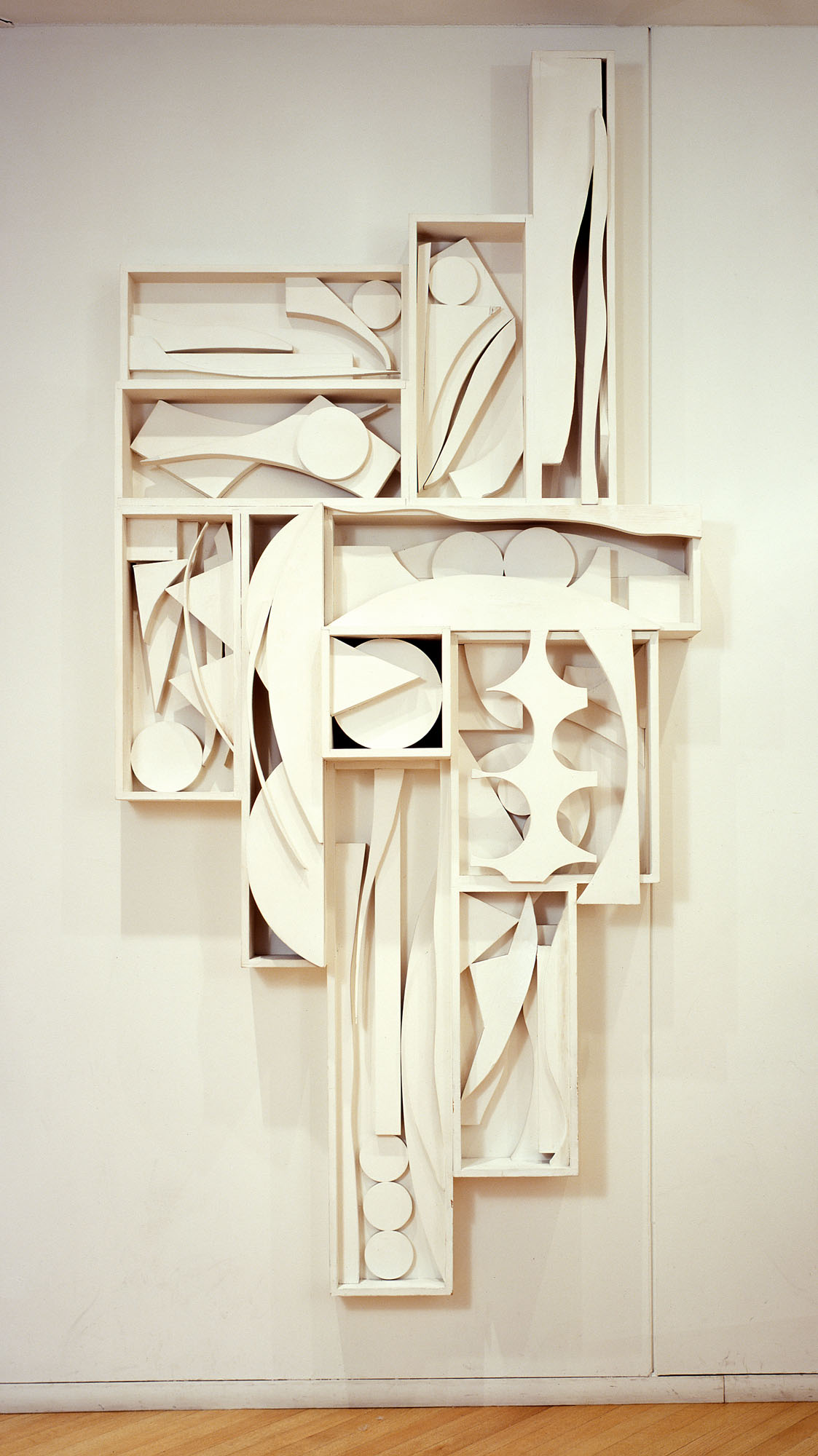The Environment
Nevelson Chapel is the only remaining, permanent, fully intact sculptural environment by Louise Nevelson. Nine wall-mounted sculptures, a tranquil white-on-white presentation accented with gold-leaf and enhanced by the play of shadow and light from a single window, the Chapel is an incomparable example of this 20th-century art form which is intended to involve or encompass visitors. Nevelson was instrumental in the conception and introduction of the form, which “sought to break down the historical dichotomy between life and art.”
More than an artwork, the Chapel is a place of spiritual engagement. Drawing from the deep Jewish roots of the artist, incorporating the themes and images of Christian traditions, the Chapel transcends any singular interpretation in its sacred expression.
At the Chapel's dedication in 1977, the late John Dillenberger, historian, theologian and Union Seminary Professor, wrote of her work:
Louise Nevelson has created many walls, and her sculptures grace many spaces. This meditation chapel, however, is the only work in which she has had the opportunity to form the total environmental ambience. One is surrounded by her arresting, symbolic creations, true to the inheritance of the theological tradition, but freed of the iconographic literalness. It was her genius to take the perceptions of her own spirit, nourished out of, but not identical with, her Jewish inheritance, and relate them sensitively to the symbolic import of the chapel which is essentially Christian.
One of a handful of 20th century chapels by great artists, Nevelson Chapel, stands in the hallowed company of Henri Matisse’s Chappelle du Rosaire de Vence and Mark Rothko’s chapel in Houston, Texas, the only chapel of its kind in New York City.
From its dedication, the Chapel of the Good Shepherd has been heralded as a jewel in New York. An “oasis,” as the artist defined it, providing solitude and respite from the harried pace of the city.





